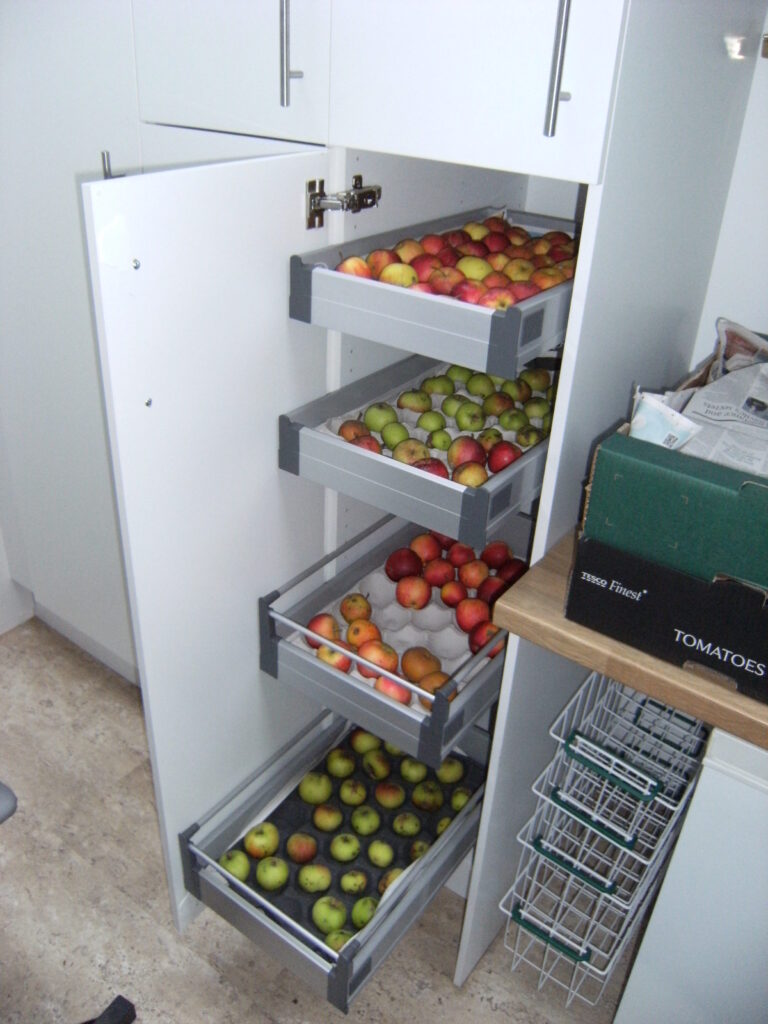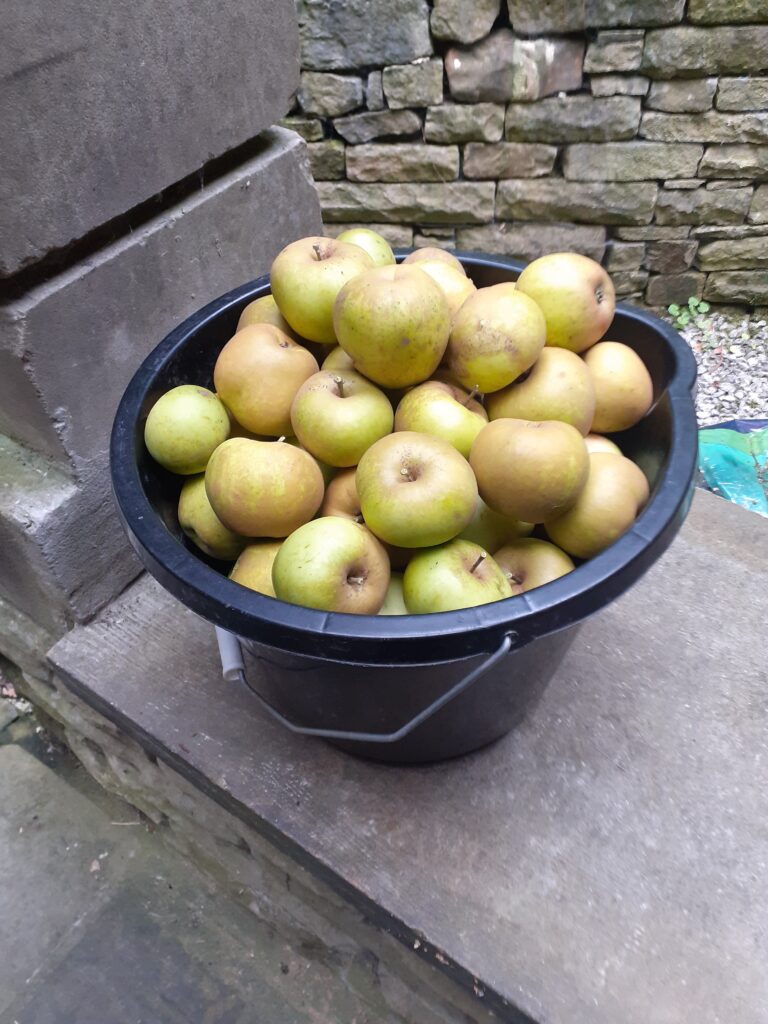
Share this article
Last week I gave a talk on apples, and was asked a question about storing. A woman at the back told me she’d wrapped her fruit in paper and when she’d opened them up, there was nothing left. As I was listening to her, I was thinking it would make a good topic for an article. Multitasking – my wife wouldn’t believe me. But yes, and here I am.
Some apples store really well, and some don’t. Earlies like Katy, Beauty of Bath, Laxton Fortune are best eaten soon after picking. Enjoy their sweet juicy rush after a few months of enforced abstinence, and if you have a glut, give them away. If they’re not earlies, apples can be stored, but vary significantly for how long.
At the moment (February), I’m still eating Bramleys which are brilliant storers, and can last until May. Although it’s known as a culinary apple, from Christmas, it can be eaten as a dessert.
Crucial to know is the difference between the picking and storage seasons. Reference books such as The New Book of Apples and The Apple Book include the two dates. The time difference between picking and storing allows for fruit to develop their full flavour. Pears are similar – rock hard on the tree, they develop into bombs of sweetness after a couple of weeks in the kitchen.
Some mid-season apples such St Edmund’s Pippin or Discovery can be stored for a month or two but no longer. The best storers – like Bramley, Crawley Beauty, Belle de Boskoop – can be kept (and eaten) through the spring.
Ideally, grow a range of varieties to give you good eating from late August until May.
The best way to store apples? In a cold room or a brick outbuilding; not a shed or loft which get too warm. An outbuilding needs to be vermin proof. Pull out trays work well but are expensive. Cheapest is to obtain (ask first!) fruit boxes and the indented cardboard trays from supermarkets, and lay the apples down so they don’t touch. One layer only. Check weekly for signs of discolouration. Remove decaying fruit immediately and eat what you can; otherwise, a whole tray will quickly rot and waste to nothing (the answer to my questioner).
That’s what I do, and it works well. But how do suppliers to supermarkets operate? And why?

Apple trees, like any plant, grow by photosynthesis. They absorb carbon dioxide, light and water to make glucose (energy) and oxygen. After picking, apples remain alive – they constantly respire, absorbing oxygen and releasing carbon dioxide in a similar way to how we breathe.
The apples begin to ripen, but the colder the storage room, the slower they will do so. Ripening is also linked to respiration, so decreasing their respiration by restricting their supply of oxygen will slow the process further.
Keeping apples in a cold, confined space to increase the time they can be stored is a method used by apple growers for centuries.
In the late twentieth century, and driven by supermarkets wanting to offer crisp apples 365 days a year, methods of storage became increasingly scientific.
Apples are now kept in huge, controlled atmosphere (CA) storage rooms. Oxygen is kept between one and three per cent, and nitrogen is pumped in to make up the shortfall.
Manipulating the oxygen in this way extends storage time by several months. An environment rich in carbon dioxide can also reduce respiration; however, it can also lead to fruit damage, so CO₂ levels are also controlled and kept between 0.5 and two per cent.
| Oxygen | Carbon Dioxide | Nitrogen | |
| Air | 21% | Trace (0.04%) | 78% |
| CA storage room | 1-3% | 0.5-2% | 97% |
In 1997, there was a further development in the storage of apples: the patenting of a synthetic molecule called 1-methylcyclopropene.
As apples ripen, they release ethylene, a gaseous plant hormone which is strongly correlated with respiration. Ethylene in the air triggers its own production and leads to the ripening of all fruit in the storage room.
Treatments such as 1-methylcyclopropene inhibit the production of ethylene, and very significantly delay the ripening process.
The combination of low oxygen and 1-methylcyclopropene can prevent apples from ripening for six or seven months.
CA rooms have benefits. But before you install one in your garage, note they are dangerous places. In 2013, for example, two workers on an estate in Hampshire died in a CA room when they thought they’d quickly check on the harvest without using breathing equipment.
Nevertheless, CA rooms are very effective. But, and it’s a big BUT, do the fruit taste as good?
I found tens of papers online trying to assess the taste of CA stored apples; reams of quantitative figures and analysis. All of which seemed to miss the point: tasting is a qualitative activity.
Supermarket apples are indeed crisp and juicy, but IMO rarely taste of much. Partly because the varieties aren’t that inspiring, but partly too I suspect it’s because (1) the apples are picked too early, and (2) the artificial storage process has affected the natural process of ripening, and the formation of the complex and delicate array of sugars and acids.
I don’t want comfort. I want heterogeneity, difference; I want nuance and complexity. Disappointment occasionally, maybe, but I want to reach for the moon every time I pick an appley globe.